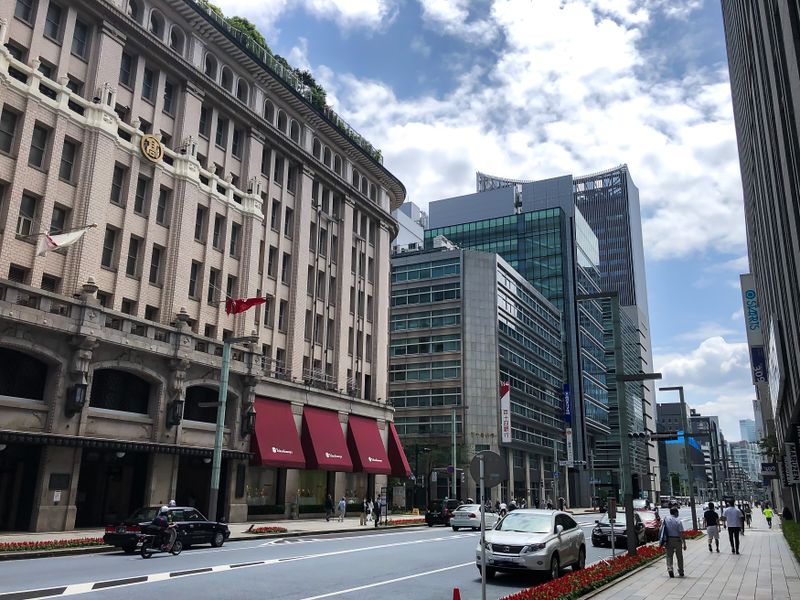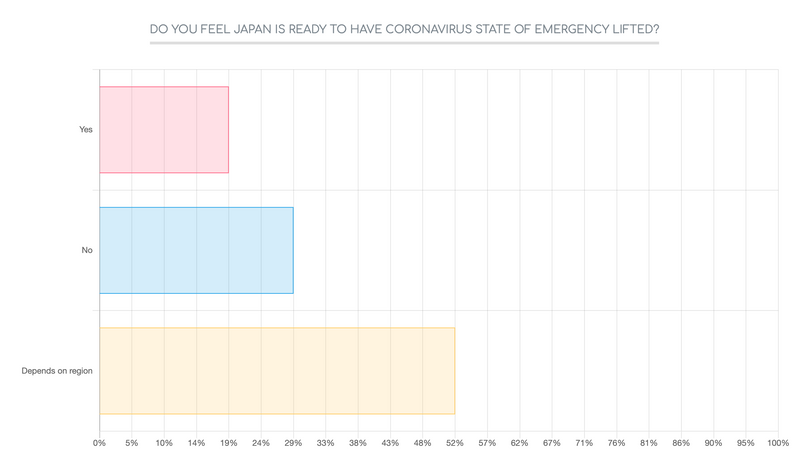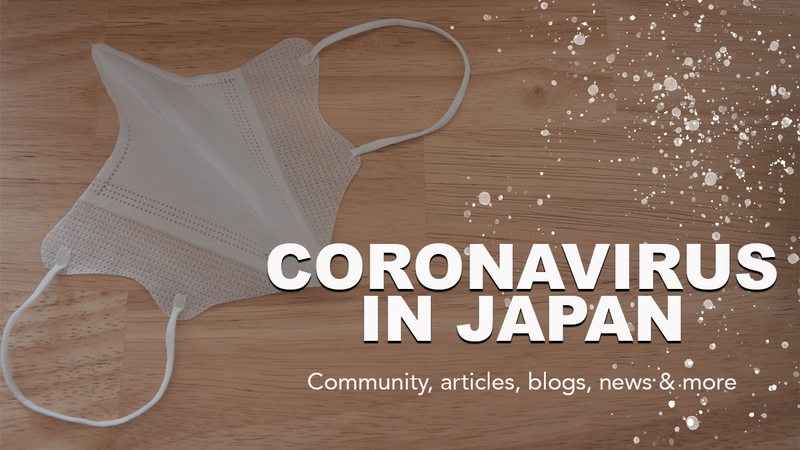May 24, 2020
Tokyo roadmap paves way toward new social, economic norms for the capital
Tokyo Governor Yuriko Koike revealed Friday a roadmap for easing economic and social restrictions in the Japanese capital ahead of an anticipated lifting of the coronavirus emergency as early as Monday.
Koike’s “Tokyo roadmap” comes on the back of an announcement on Thursday from Prime Minister Shinzo Abe in which he said that while Tokyo and the surrounding prefectures of Chiba, Saitama and Kanagawa (along with Japan’s northernmost main island of Hokkaido) would remain under a state of emergency a further review of the situation could see this lifted as early as Monday.
The Tokyo roadmap, a summary of which is currently available to read on the Tokyo Metropolitan Government’s Disaster Prevention Information homepage (machine translation available), would see residents and businesses in the Japanese capital return to a new normal -- atarashi nichijou / 新しい日常 - over four steps with close daily monitoring of the situation.

(Tokyo's Nihombashi district on Sunday, ahead of a possible lifting of the state of emergency in Tokyo as early as Monday)
According to the roadmap Tokyo was at Step 0 as of Friday’s announcement with requests to reduce person-to-person contact by 80 percent, to refrain from crossing into other prefectures, and to avoid facilities with a history of cluster infections remaining in place.
A lifting of the state of emergency would see the capital take Step 1, the first of three stages of an easing of restrictions on what is essentially the ability for residents to go out and be social and for local businesses and facilities to host them and in doing so return to normal business operations, among other measures.
We list here facility examples detailed in the Tokyo roadmap and at which step they could be subject to an easing of restrictions (*the following is merely our own attempt at a translations of the original roadmap documents, and vagaries in translation may reflect this):
Tokyo Roadmap: Step 1
Exhibition spaces | museums, galleries, libraries | open |
Indoor sports facilities | gymnasium, swimming pools, bowling alleys | open with some restrictions |
Outdoor sports facilities | baseball fields, tennis courts, athletic fields | open with some restrictions (as is / was the case in Step 0) |
Outdoor sports facilities | outdoor swimming pools | open with some restrictions |
| Universities | universities, vocational schools (excluding vocational high schools), learning spaces in miscellaneous schools | open but with class rotations etc |
Education institutions | schools | open with rotation of days combined with online learning (across steps 1 - 3) |
| Food service | restaurants (including izakaya), coffee shops, other eateries (cafes etc) | business hours extended: 5:00 - 22:00 (not including home delivery, alcohol served until 22:00) |
| Events | Up to 50 people | - |
Tokyo Roadmap: Step 2
Indoor sports facilities | gymnasium, swimming pools, bowling alleys | open |
| Outdoor sports facilities | baseball fields, tennis courts, athletic fields | open |
| Outdoor sports facilities | outdoor swimming pools | open |
| Universities | university, vocational school (excluding vocational high schools), learning spaces in miscellaneous schools | open |
| Cram schools | driving schools, cram schools (juku) | open |
| Theaters | theaters, viewing areas (stadium seating, sports ground seating etc), movie theaters, entertainment halls | open |
Meeting / exhibition facilities | auditorium, meeting halls, exhibitions halls, hotel conference / meeting rooms | open |
| Commercial facilities | retail stores other than those selling daily necessities, stores offering services other than those considered daily necessities | open |
| Food service | restaurants (including izakaya), coffee shops, other eateries (cafes etc) | business hours extended: 5:00 - 22:00 (not including home delivery, alcohol served until 22:00) |
| Events | Up to 100 people | - |
Tokyo Roadmap: Step 3
The above +
Recreational facilities | internet cafes, manga cafes, shooting venues (like those found at onsen resorts), betting shops (horse / circuit bike), nude studios, peep shows, strip theaters, private room video stores | open |
Amusement facilities | mahjong stores, pachinko parlors, game centers, amusement parks | open |
Food services | restaurants (including izakaya), coffee shops, other eateries (cafes etc) | business hours extended: 5:00 - 24:00 (not including home delivery, alcohol served until 24:00) |
| Events | Up to 1,000 people | - |
(Yes, you've read that correctly -- even facilities such as peep shows and strip theaters are listed in the Tokyo roadmap.)
According to Governor Koike, Tokyo will move to Step 1 on Tuesday should the central government lift the state of emergency on Monday. See the Tokyo roadmap in full (in Japanese)
While undertaking these steps to ease restrictions on social and economic activities the Tokyo Metropolitan Government will continue to monitor the status of any spread of the new coronavirus on a daily basis using seven factors to determine whether or not restrictions should be reimplemented. Factors include the number of daily infections -- with the roadmap being followed should new cases be below 20 each day and the rate of unknown infection routes account for less than 50 percent of the daily cases. Other factors include the number of hospitalized coronavirus patients and the weekly increase in those testing positive for the virus.
The Tokyo Metropolitan Government’s coronavirus recovery roadmap centers on five points in order to realize its goal of a return to new economic and social norms while keeping the virus in check. Points include minimizing the spread of infections by refraining from going out, monitoring the capacity for social and economic activities to coexist with the virus, and the development of a comprehensive medical / testing system to deal with any second wave of coronavirus infections.
The five points also include the issuing of a “Tokyo alert” should this be required. In the case of an alert the city’s iconic Rainbow Bridge will be illuminated in red, taking inspiration from a similar system in the city of Osaka which saw some landmark structures in the city illuminated in different colors depending on the situation with regards to the spread of the new coronavirus.
On Saturday Tokyo reported two new coronavirus infections, the lowest daily number since a state of emergency was issued in April. On the same day some department stores in the metropolitan area began extending business operations.
Prime Minister Abe initially declared a state of emergency for Tokyo and seven other prefectures in Japan in early April before expanding it to cover the whole country on April 16. While the coronavirus emergency has been lifted for much of Japan ahead of the initial scheduled lifting on May 31, some foreign residents in Japan remain anxious that it may be too early.
 ("Pop Survey" on City-Cost asking readers if they feel Japan is ready to have coronavirus emergency lifted: https://www.city-cost.com/)
("Pop Survey" on City-Cost asking readers if they feel Japan is ready to have coronavirus emergency lifted: https://www.city-cost.com/)
According to an on-going survey on City-Cost around 30 percent of respondents feel that Japan is not ready to have a state of emergency lifted while around 50 percent feel it depends on the region.
How much are you aware of the Tokyo roadmap? Do you think the remaining prefectures of Japan are ready to be lifted from their coronavirus state of emergency? Let us know in the comments or select your answer from the Pop Survey on the top page of City-Cost.
Related ...
Videos
"Life in a Japan state of emergency: Interviews with expats during coronavirus pandemic"
Subscribe to the City-Cost YouTube channel here
Share your thoughts and concerns on life in Japan during the coronavirus pandemic with other foreigners living in Japan on City-Cost:




0 Comments